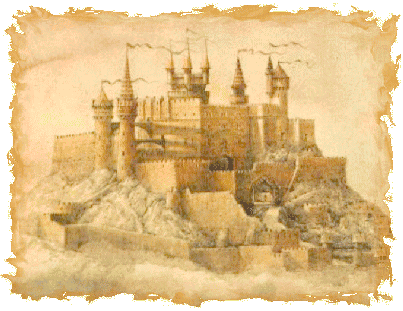
![]()



![]()
Welcome to Gwynnevere’s page on Europe; a United Europe. This site aims to reach and - when possible - join all people interested in Europe, its regions and its people: History, Landscape, Culture, Folklore, etc.
NO POLITICS !

United in Diversity -- That is the motto of the European Union.
It first came into use around the year 2000 and was for the first time officially mentioned in the Treaty establishing a Constitution for Europe, which was signed in 2004.
The motto means that, via the EU, Europeans are united in working together for peace and prosperity, and that the many different cultures, traditions and languages in Europe are a positive asset for the continent.
The ultimate goal of the European Union is an ever closer union among the people of Europe, in which decisions are taken as closely as possible to the citizens; the objective is to promote an economic and social progress, which is balanced and sustainable, assert the European identity on the international scene and introduce a European citizenship for all nationals of member states.

The European Union has its own flag.
It is the symbol not only of the European Union but also of Europe's unity and identity in a wider sense. The circle of gold stars represents solidarity and harmony between the peoples of Europe. The number of stars has nothing to do with the number of Member States. There are twelve stars because the number twelve is traditionally the symbol of perfection, completeness and unity. The flag therefore remains unchanged regardless of EU enlargements.
Hear the European Anthem (02:07)
The performance you can hear by clicking here is by the European Union Youth Wind Orchestra conducted by André Reichling. It was recorded in 1994 at the Teatro da Trindade, Lisbon. Musical arrangement: Herbert von Karajan. The European Commission thanks everyone involved in making this recording.
All rights of the producer and owner of the work reproduced reserved.
Real Player |
Windows Media Player |

Europe Day is celebrated on May 9th.
On the 9th of May 1950, Robert Schuman presented his proposal for the creation of an organised Europe. This event, known as the "Schuman declaration", is considered the origin of what is now the European Union. Therefor, the 9th of May has become an occasion for activities and festivities that bring Europe closer to its citizens, and people of the Union closer to one another
European Union Resources
![]() A Brief History of the European union
A Brief History of the European union
![]() European Union and Multiligualism Policy
European Union and Multiligualism Policy
![]() The European Union Constitution
The European Union Constitution
![]() Delegation of the European Commission in the USA
Delegation of the European Commission in the USA
![]() The European Union, a guide for Americans
The European Union, a guide for Americans
![]() The Parliament -- European Politics & Policy
The Parliament -- European Politics & Policy
E.M.U. -- The Economic and Monetary Union
![]() European Monetary Union and the Euro
European Monetary Union and the Euro
![]() Gold Digest -- The European Monetary Union
Gold Digest -- The European Monetary Union
![]() IMF - International Monetary Fund
IMF - International Monetary Fund
![]() The International Monetary Fund & The European Monetary Union
The International Monetary Fund & The European Monetary Union
![]() The UK Government and the Euro -- The Official Treasury Euro Resource
The UK Government and the Euro -- The Official Treasury Euro Resource
![]() ECB (the innermost circle of innermost circles of Euroland) on the EMU
ECB (the innermost circle of innermost circles of Euroland) on the EMU
The European Union now counts 25 member states:
| Austria | Estonia | Hungary | Luxemburg | Slovenia |
|---|---|---|---|---|
| Belgium | Finland | Ireland | Malta | Spain |
| Cyprus | France | Italy | Poland | Sweden |
| Czech Republic | Germany | Latvia | Portugal | The Netherlands |
| Denmark | Greece | Lithuania | Slovakia | United Kingdom |



